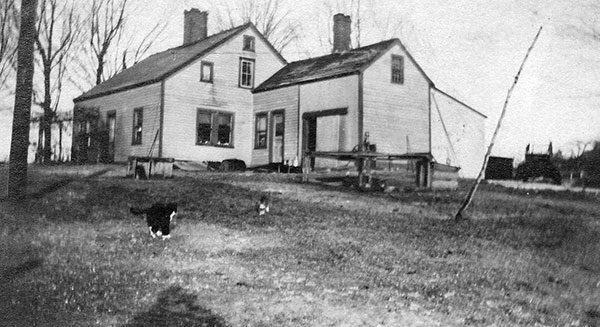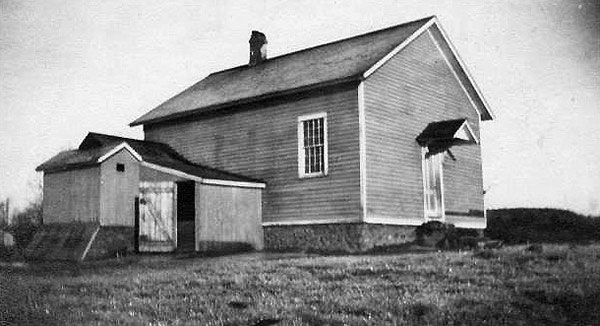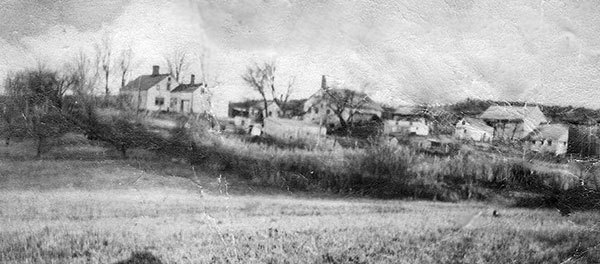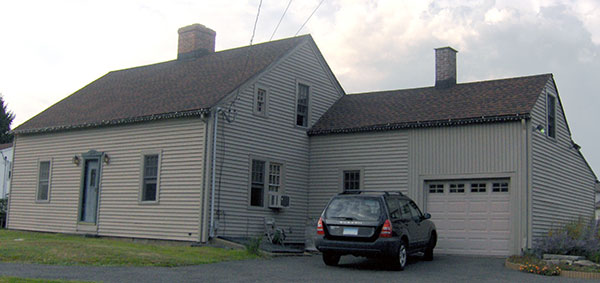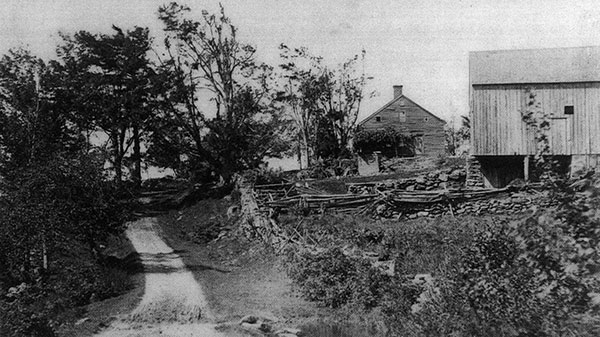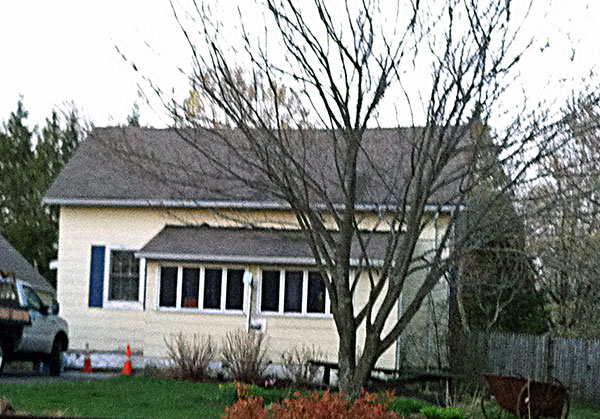|
|
||||||||||||
 |
 |
|
Wolcott Historical Society History for May 2013 By Florence Goodman Spindle Hill's historical connection to the Alcott family has intrigued me for many years. Old land records indicate the vast amount of property they owned in this section of town. In 1731 John Alcott purchased a117-acre tract of land on Spindle Hill and added to his holdings over 47 years until he had acquired over 1200 acres. He gave each of his twelve children large land parcels in the vicinity of his Spindle Hill farm. This month I'd like to discuss the influence this family and several other families had on the area and how Spindle Hill received its name.
Each time I drive past the small white house located at 370 Spindle Hill Road across from Rustic Acres, I think of the Spindle Hill/West School that was located there. In the late 1700s, Wolcott had a one-room schoolhouse in six of its districts throughout town. The Spindle Hill/West School was in the West School District and was located behind the Obed Alcott house at 339 Spindle Hill Road close to the intersection of Clinton Hill and Andrews Road.
Obed Alcott was the son of David and Abigail (Johnson) Alcott. He was born on Spindle Hill on September 8, 1776 and died August 5, 1847. He married Anna Andrews on July 13, 1797. Obed's father gave him thirteen acres of land at the corner of Spindle Hill and Andrews Road and in the fall of 1802 he built a house on that property. Obed worked on his farm making clock cords and clock pinions for the Terry, Thomas and Hoadley Clock Company. In 1824 Obed Alcott donated the use of part of his land east of his house for the West School (prior to this school was held in private homes). At some point in time, the West School was moved from behind the Obed Alcott house across Spindle Hill Road directly across from where Rustic Acres is located. This school served the region well for over 100 years providing an education for the children of not only Spindle Hill, but also down into Allentown. In 1946 this school was turned into a private residence and continues as such today.
Obed and Anna Alcott had four children; their oldest son, Dr. William A. Alcott was born August 6, 1798. He attended local schools in his early years and loved to read books, which was influenced by his mother and cousin, Amos Bronson. He began tutoring younger children and eventually taught in the West District School. He was interested in improving the standards in education and wrote volumes of books for schools, and teachers. He established Wolcott's first public library in the parish meeting house. His cousin, Amos Bronson Alcott also felt this need for reform in education in our country. In 1825-26 William attended Yale Medical School and received a Diploma to practice medicine and surgery. He moved to Boston in 1831 and became the editor of the first children's magazine published in the United States.
Amos Bronson Alcott was born on Spindle Hill on November 29, 1799 in a house that was located at the corner of Spindle Hill and Beach Roads. Amos Bronson's family moved into his grandfather's farmhouse situated on this property when he was very young. His father, Joseph Chatfield Alcott was a farmer. His mother, Anna Bronson Alcott, was well educated and instilled in him a love for learning and reading. As a boy, Amos Bronson worked on the Spindle Hill farm with his father and brothers and attended local schools. He eventually taught at the West District School. Amos Bronson Alcott was responsible for making a classroom more like home. He designed and built the first single desks that had the seats attached to them, he designed individual student slates, and classroom libraries. He encouraged his students to borrow books from school and read them at home. He did not believe in corporeal punishment for poorly behaved students and did away with such practices at his schools. Both of these Alcott men were influential in bringing much needed changes to education in those early years.
On December 5, 1834 the Obed Alcott house and one acre of land was sold to Martin L. Andrews who continued ownership of the house and land through the 1860s. Obed Alcott's wife was an Andrews and her family also owned a large amount of land in this section of town. The Andrews's name is remembered for their famous horseradish that was made in Wolcott on Spindle Hill. The horseradish is still produced today, but not in Wolcott.
In the late 1800s, ownership of the property changed to the Provost family. They maintained this fairly large farm through the early 1900s. It is uncertain who owned the house from the 1930s until the early 1980s, but for the past twenty-five years the same family has owned the Obed Alcott House.
Spindle Hill was also the section of town where the famous clockmaker, Seth Thomas was born, grew up and made his first clocks. Although he did not establish his large factory in our town many of our residents at the time earned an income by producing some of the parts for his clocks. Many women spun flax for the cords that held the weights in the clocks that he produced and the men cut Mountain Laurel and carved the gear mechanism for the clocks. The name Spindle Hill came from the "whirr" of the spindles that could be heard as they were spinning the flax for the cords on those hot summer evenings.
Amos Bronson Alcott wrote in his book, "New Connecticut" that he could see Long Island Sound from his Spindle Hill home, which boggles my mind. He traveled far and wide, but his first love was always Spindle Hill. So the next time you take a ride on the very long and winding Spindle Hill Road think about some of our ancestors that inhabited this land so long ago and how they affected the development of Spindle Hill.
(Information for this article was taken from, The 175th Anniversary 1796-1971 by John Washburne, History of the Town of Wolcott, Connecticut from 1731 to 1874 by Samuel Orcutt, A Salute To Two Centuries of Education in Wolcott, Connecticut from the Wolcott Historical Society, 1986 Historic Resources Inventory by Paul Loether.)
The Obed Alcott House, early 1900s.
The Spindle Hill/West School on Spindle Hill Road.
The Provost Farm in the early 1900s.
The Obed Alcott House at 339 Spindle Hill Road today.
Solomon Alcott House where Amos Bronson Alcott grew up.
The West School at 370 Spindle Hill Road.
To view past installments of the Wolcott Historical Society News, click here.
|
|
|
[Home]
[News]
[Purpose]
[Calendar]
[Museum]
[Membership]
[History]
[Contacts]
[Links]
All material at Wolcott Historical Society Web sites Copyright © 2000-2013 Wolcott Historical Society |
